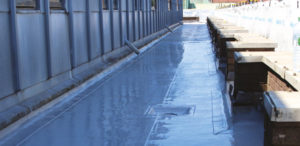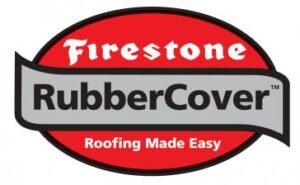
Single-ply roofing is a non-asphalt-based system that has become more and more popular over the last three decades, due to its flexibility and price. However, from an installation aspect single-ply roofing is easier, neater, and, without the need to heat up bitumen, it’s also cleaner to install. On top of this it is faster to install, however, this will depend on your situation. Unconventional roof design is often an issue that we face when installing roofing systems. Due to its lightweight design, single-ply roofing can be used for contemporary roof designs that need a lighter weight, yet durable material. Environmental responsibility is also in the mind of many of us nowadays. Single-ply roofing ticks this box too. Many forms have a light-colored, reflective surfaces could significantly reduce energy usage. The only drawback to single-ply roofing is, as the name suggest, is the single-ply can be subjected to punctures and damage. However, reinforcement can be added to reduce the risk of tearing.
Thermosets and thermoplastics
In general, single-ply roofing systems can be categorised into two types; thermosets and thermoplastics. Thermosets are normally made out of rubber polymers and so have to be installed using tape or a contact cement because hot air welding will alter their physical properties. A common example of thermoset single-ply roofing is ethylene propylene diene monomer or EPDM. These are renowned for longevity in terms of weather resistance, temperature fluctuations, and UV damage. EPDM is usually applied in thicknesses of 30-90mm and is ideal for covering large surfaces. Thermoplastic is the other form of single ply membrane. Unlike thermosets, thermoplastics are installed using heat, which forms a tight seal along the laps. Once cooled, their properties return to their original form. PVC is a common type of thermoplastics single-ply roofing system and it often includes a felt lining for additional protection. PVC is a fire retardant and is normally applied with additional processing aids such as stabilisers, pigments, fillers, plasticisers and biocides which all help to prolong its life. TPO is another common thermoplastic single-ply roofing system, however, it the processing aids often need to be applied by the contractor. It is important to note that with all types of thermoplastic single-ply roofing system, repairs and maintenance is fairly easy because of their use of hot air welding.
RubberCover EPDM
Quick and easy roofing. No flame. No worries.
The Firestone RubberCover EPDM single ply roofing system is especially designed for the waterproofing of small residential flat roofs of up to 100m2 surface area, such as those of extensions, dormers, garages, balconies, garden sheds and guttering.
This system comprises the high performance Firestone RubberCover EPDM single ply membranes with a selected set of accessories which provide a unique combination of features and benefits:
- Outstanding lifespan
- Ease of application
- Reduced overall cost
- Flame and heat-free installation
- Environmentally-friendly
Firestone RubberCover EPDM, the single ply waterproofing system for all residential flat roofs – quick, easy, flame-free and durable!

If you require more information about single-ply roofing systems or would like a free, no-obligation quote, please contact our professional and friendly team on 07971 290975
